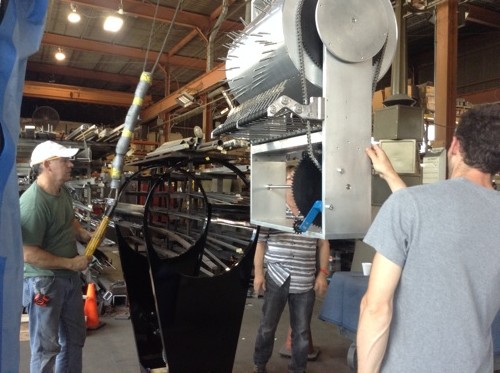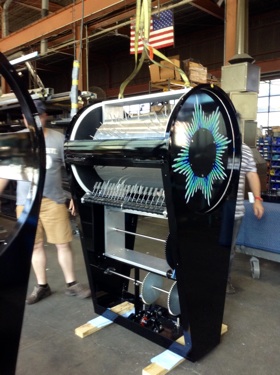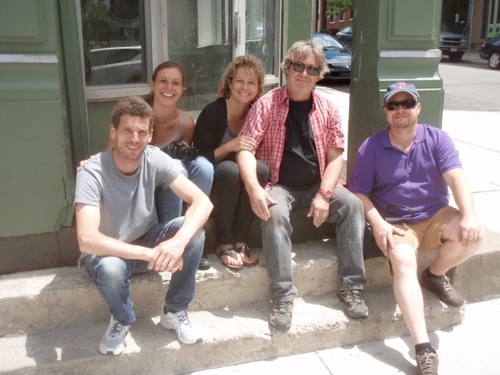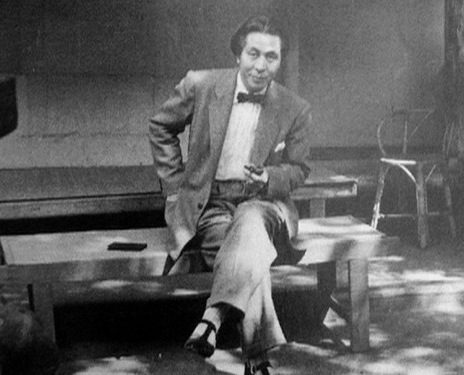
The Makkeweks sea monster sculpture upside down, roughed out in stack-laminated cork
No matter the depth of scientific knowledge there will always be monsters. You don’t have to look very hard to find them. Politics, industry and information technology are a few obvious breeding grounds. I’ve been thinking a lot about monsters as I begin to carve my Makkeweks sea monster sculpture for the City of Oakland. Even the pile of new materials jamming the studio is a kind of monster. As I commence to carving the beast, I’m finding monsters to be a surprisingly apt metaphor for the age (as well as my mental state).

Sketch showing the arrangement of laminations over the underlying, midsection form
The sculpture will be cast in bronze from a wax positive but I’m making the original out of solid cork. The material comes from the cork oak, Quercus suber, the word ‘cork’ being a corruption of the latin ‘quercus’. I’ve made stack laminations to rough out the shape of the sculpture from sheets of industrial cork from Portugal. The material cuts easily with a chain saw or cross cut handsaw, and carves beautifully with a wood rasp. The surface can be sanded very smooth, especially if skim coated with plaster. It can also be burned with irons to create detailed surface texture. I’ve begun to carve the underside/belly of the beast to put my tools and techniques to the test. The underside will not be very visible in the finished piece, so I’ll learn what works best before flipping the form to sculpt the top/back.

I designed and made my own 26″ long rasp from expanded metal lath and 1 x 4’s
Unable to find a rasp long enough to make smooth contours over a large expanse, I designed and made my own. I discovered that expanded metal lath is sharp enough and has open enough voids to cut the cork aggressively. I bent a slight arc into a 26†length x 9†wide section of lath, bent the longwise edges to right angles at about 1.5†in from the ends and screwed the material around a 26†long 1 x 4, capped with a slightly narrower 1 x 4 for a grip. My invention works like a charm, and its weight makes for a steady swipe over the material for as long as my arms can bear it. The work is slow going but satisfying, a work out, and I am able to meditate on the monster as it takes shape.
I’m particularly satisfied with my choice of material. Sheets of industrial cork are expensive, but comparable to foams of comparable density. Unlike foam, the cork is non-toxic, and the scraps and shavings are biodegradable. Also, carving the material leaves crumbs about the size of vermiculite and there  is no air born particulate, so I do not need to wear a mask or other special protection.
To learn more about the development of Wowhaus’ Makkeweks Project, click here.
 Garrett McLean makes molds of Makkeweks at Berkeley’s Artworks Foundry
Garrett McLean makes molds of Makkeweks at Berkeley’s Artworks Foundry The underside of the head was the first part of the sculpture to receive molds.
The underside of the head was the first part of the sculpture to receive molds.
























